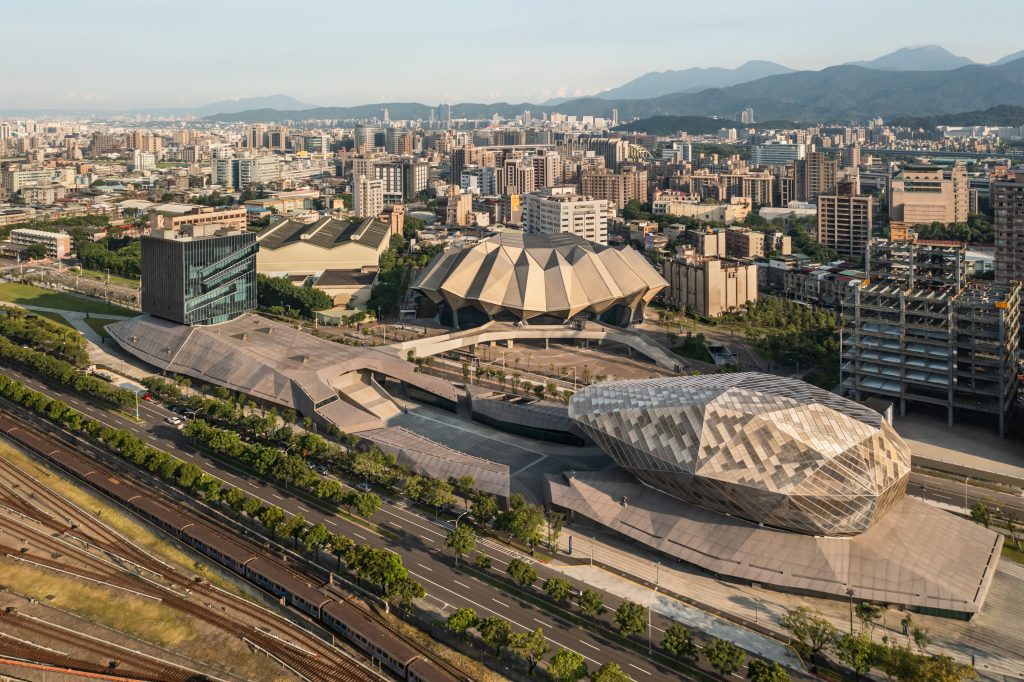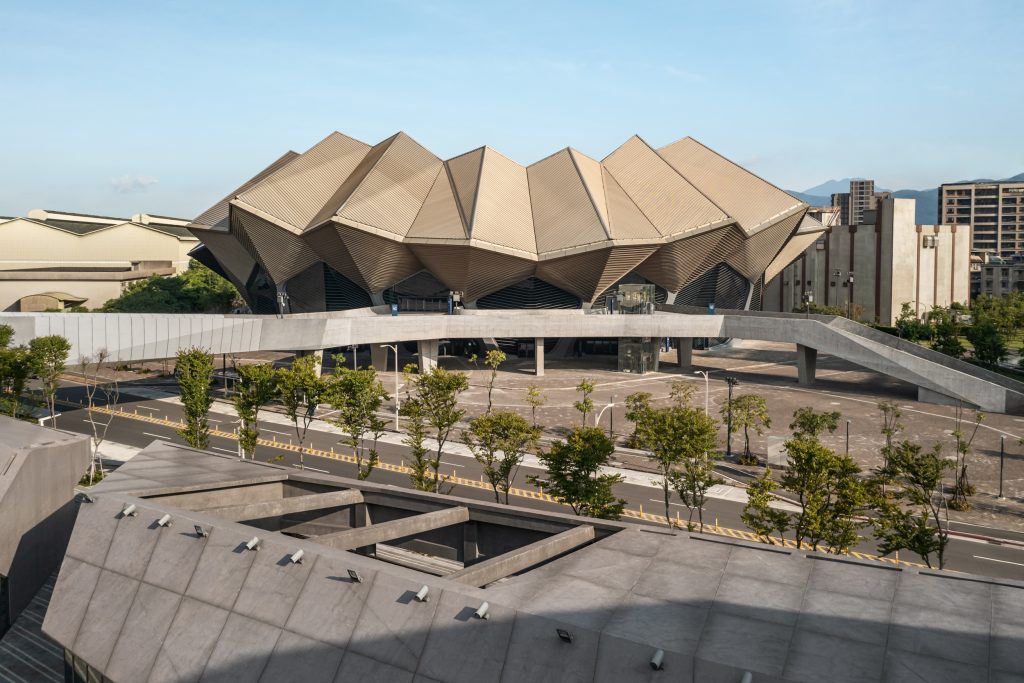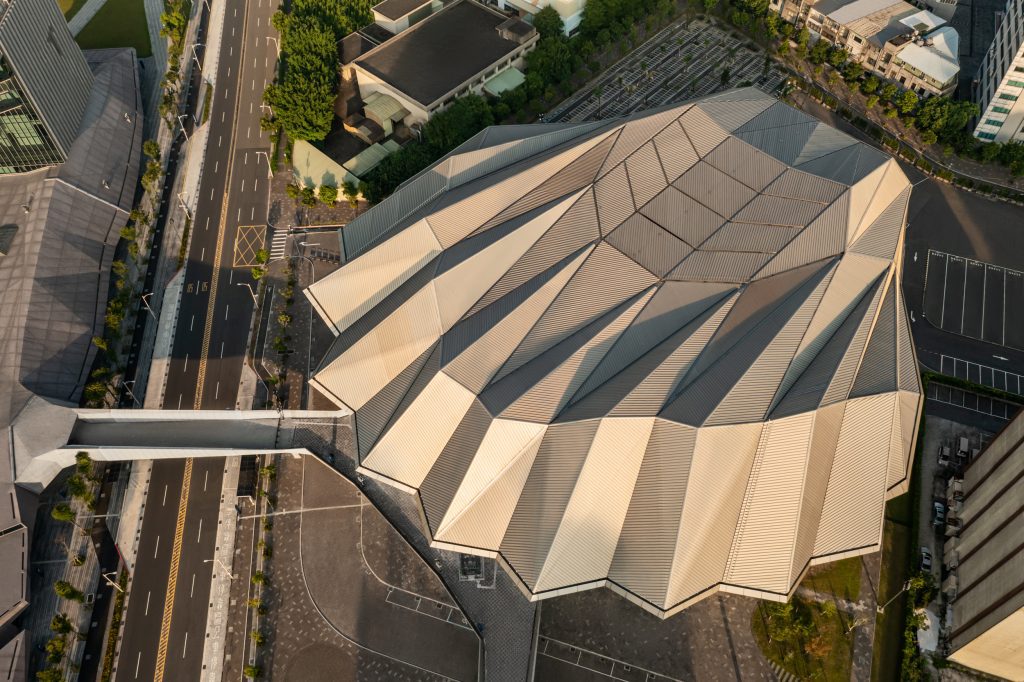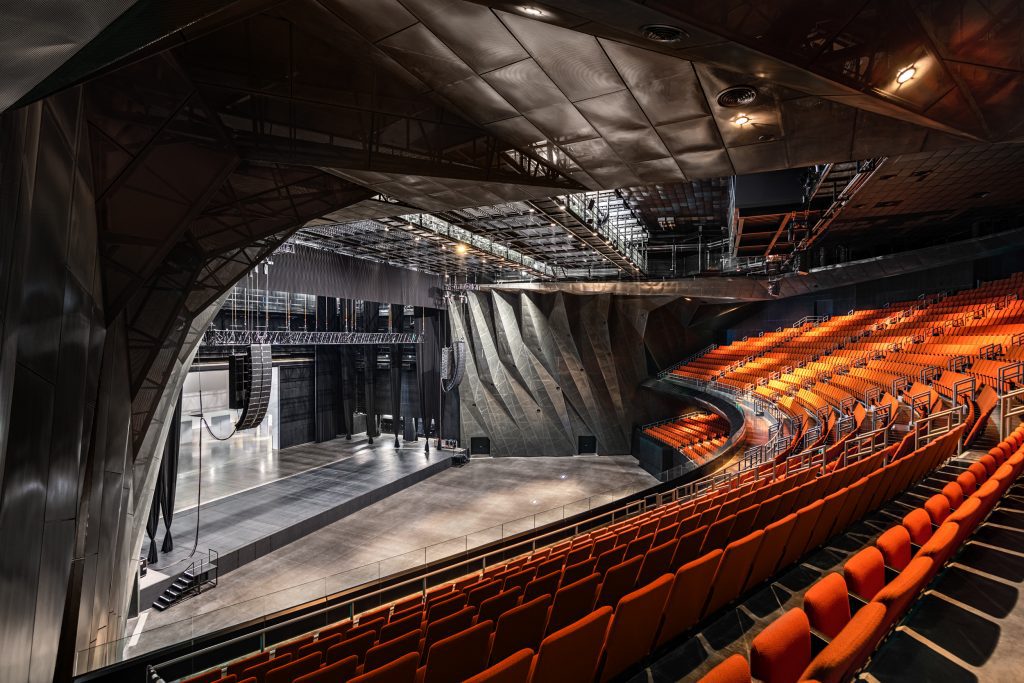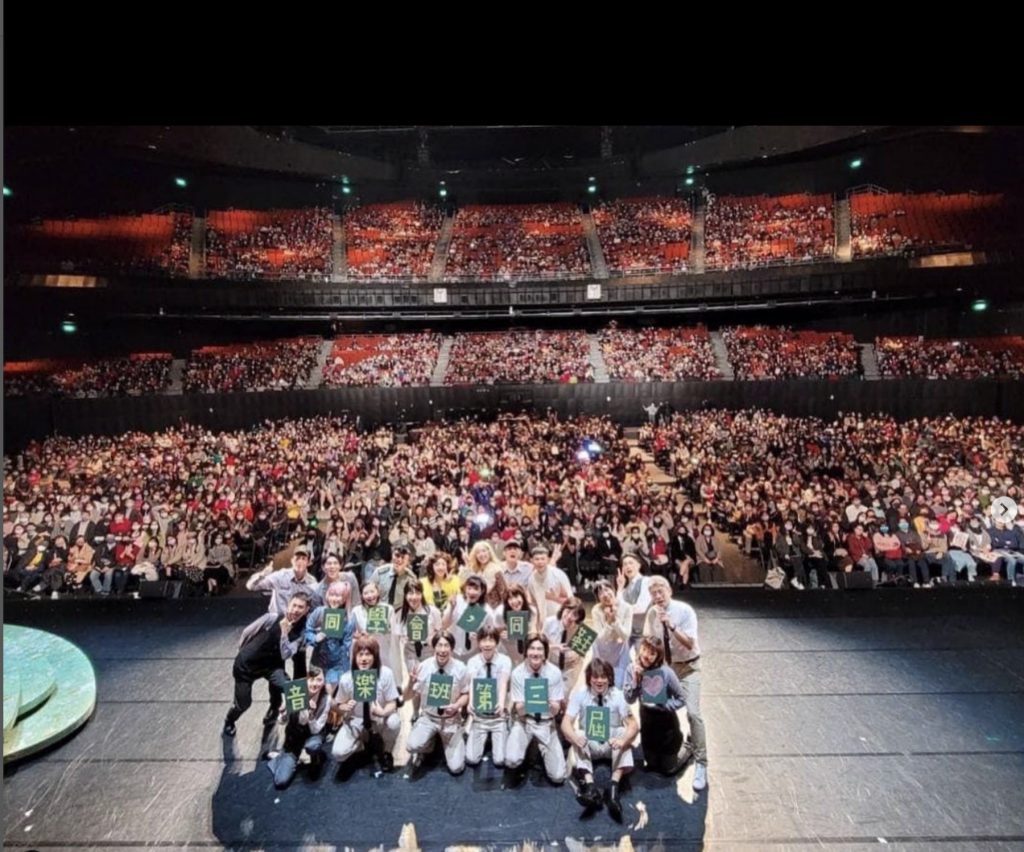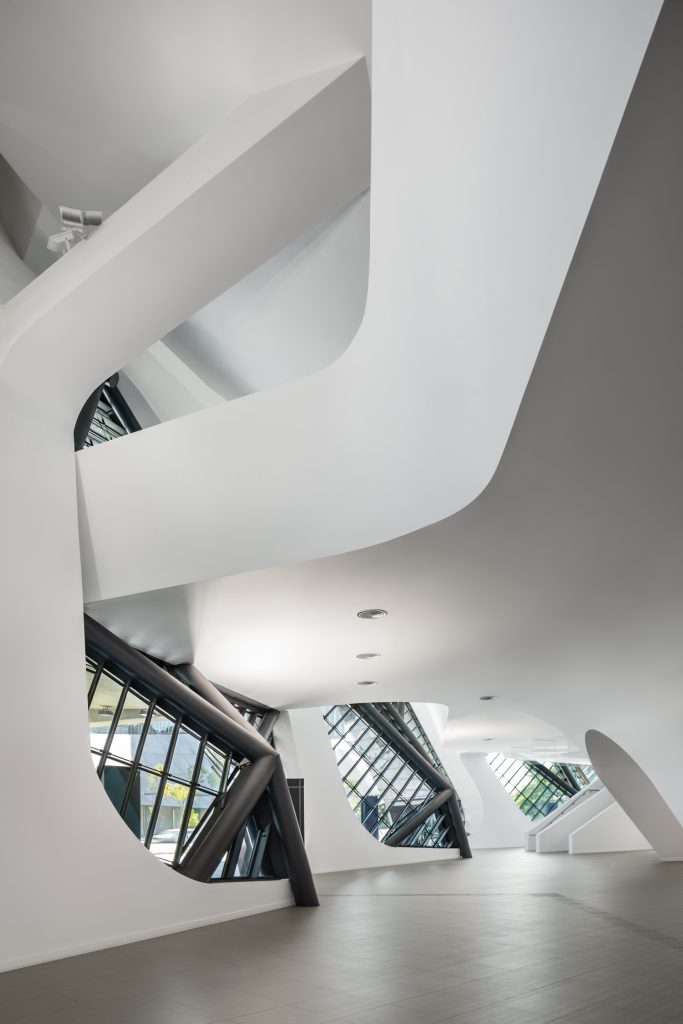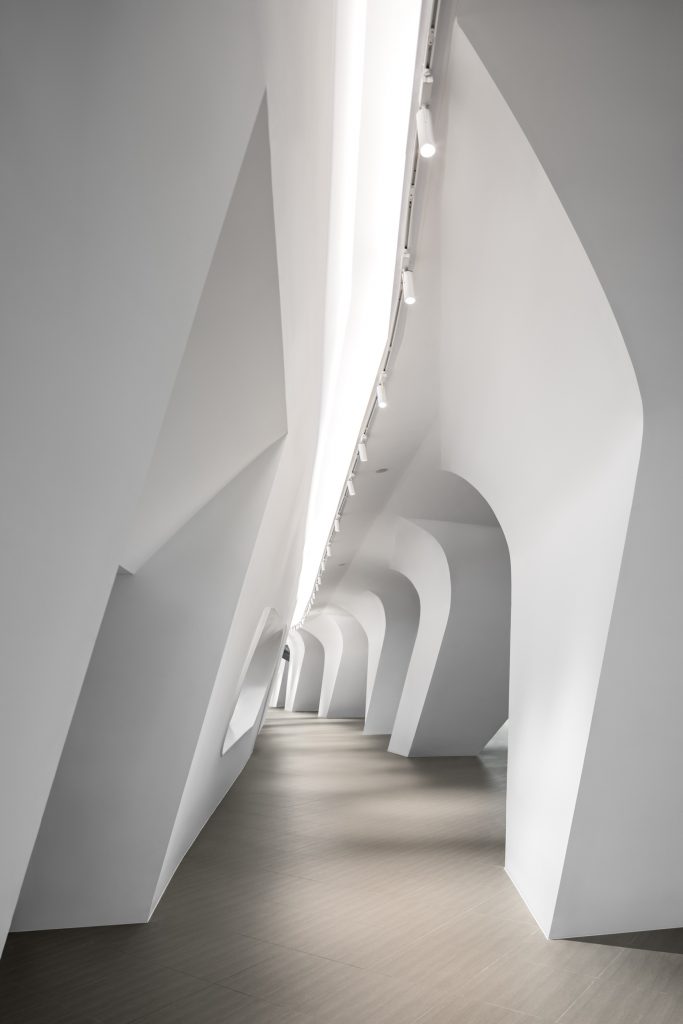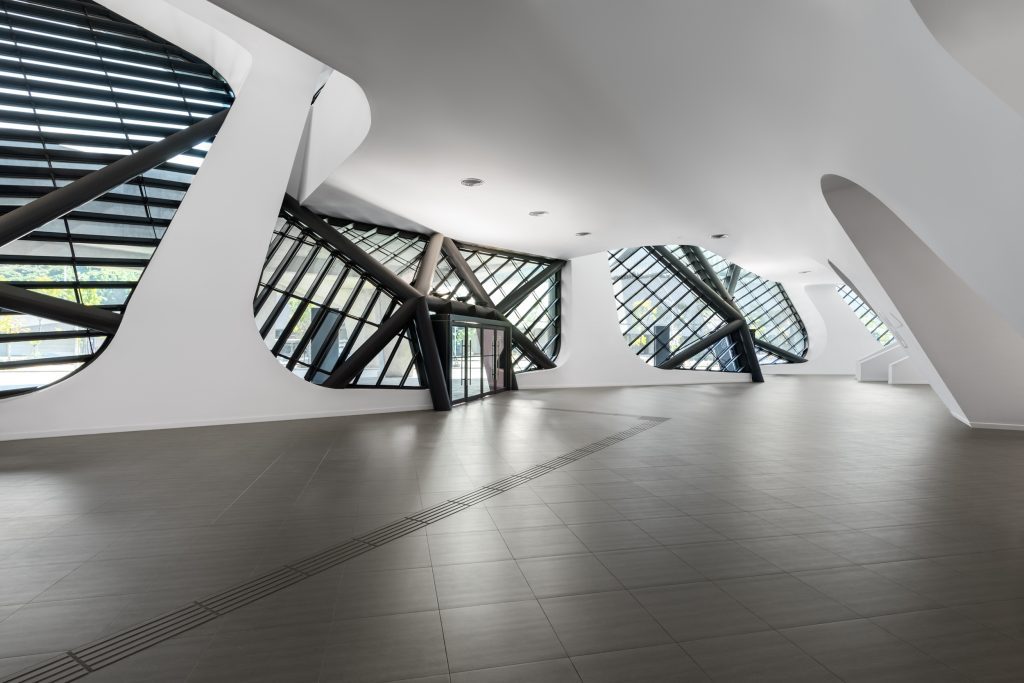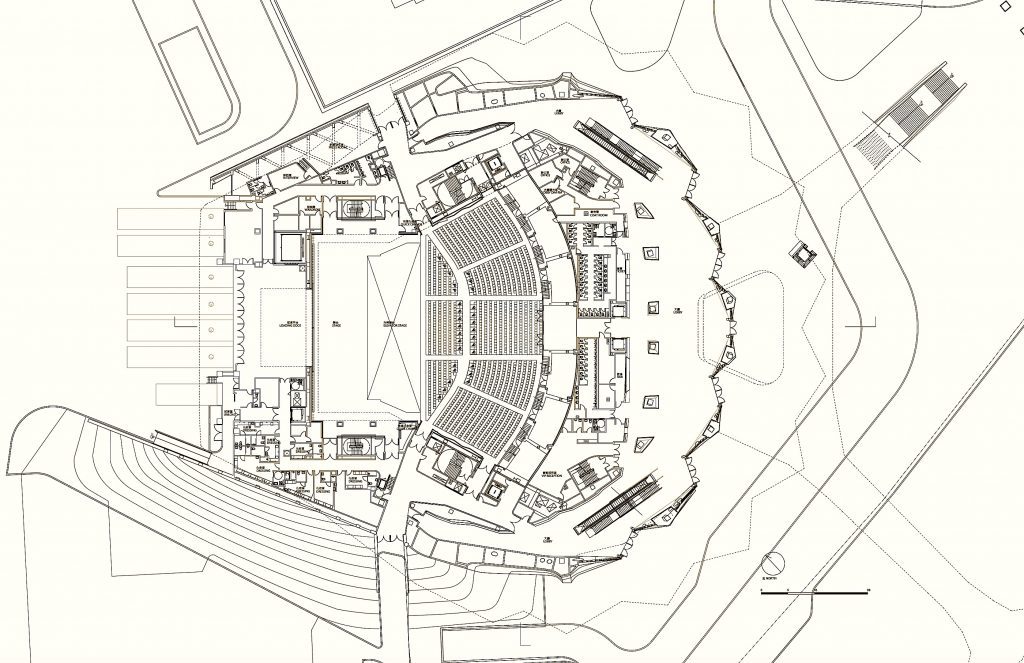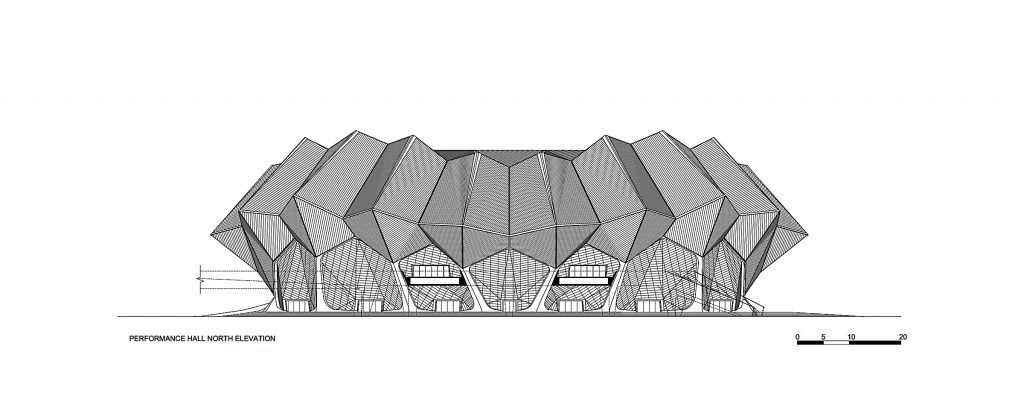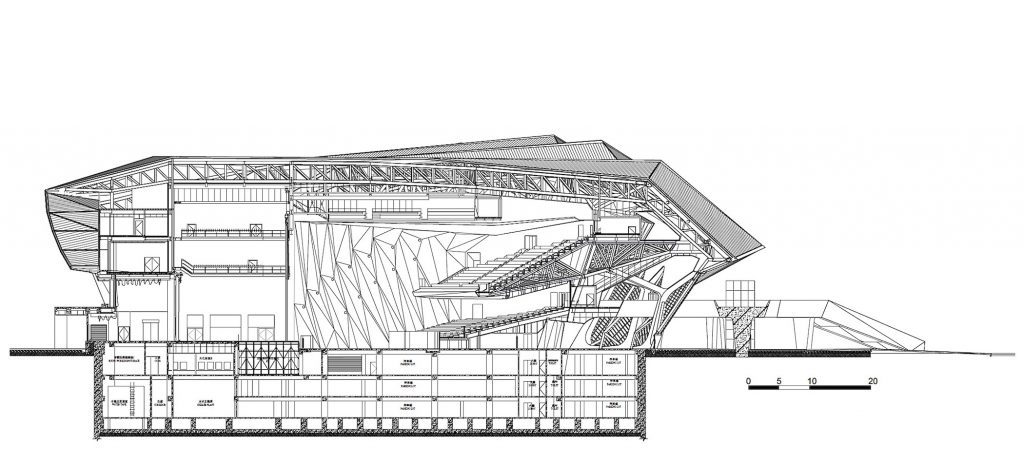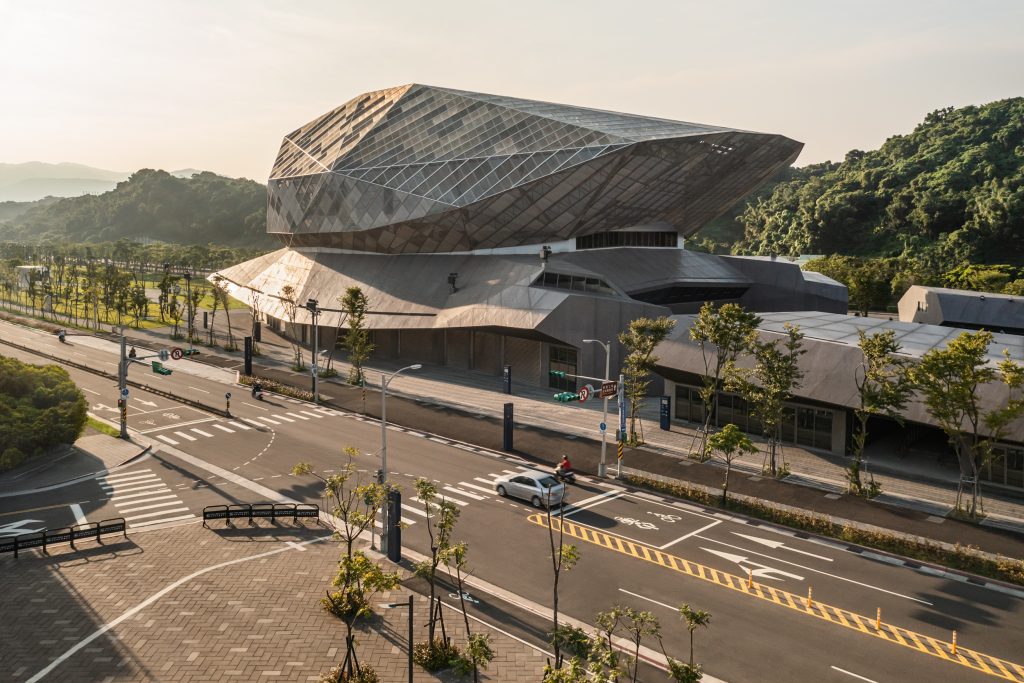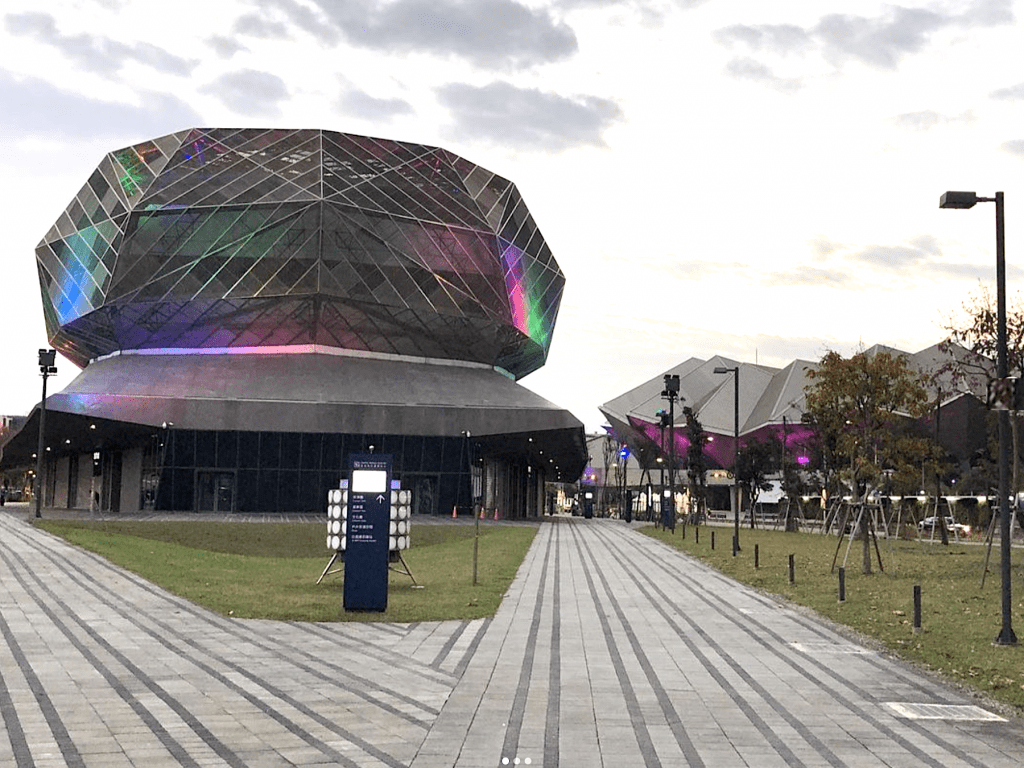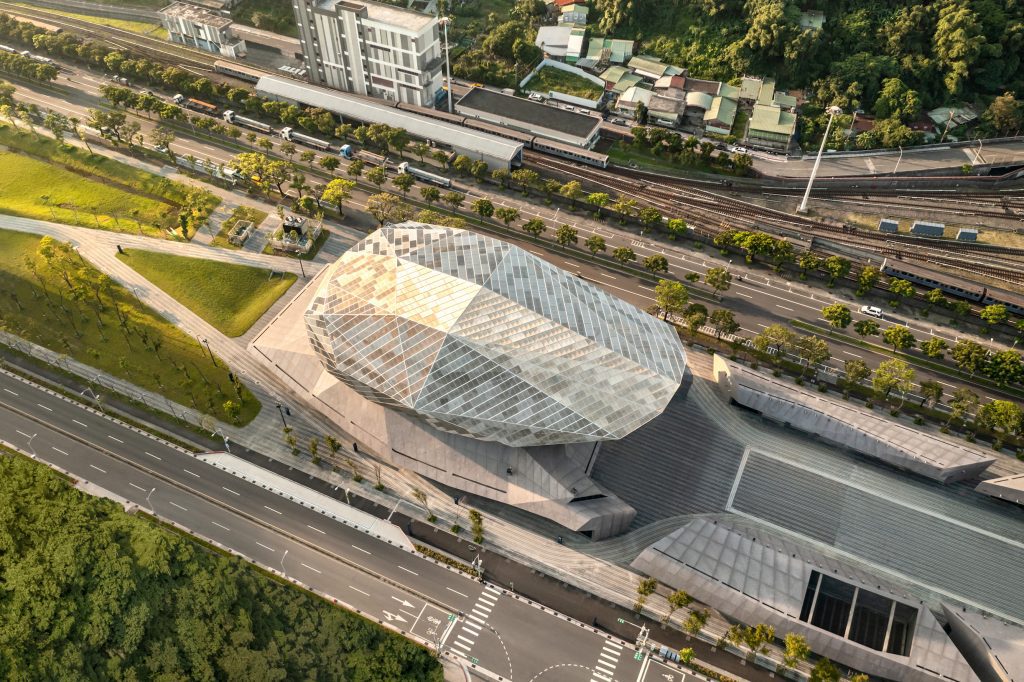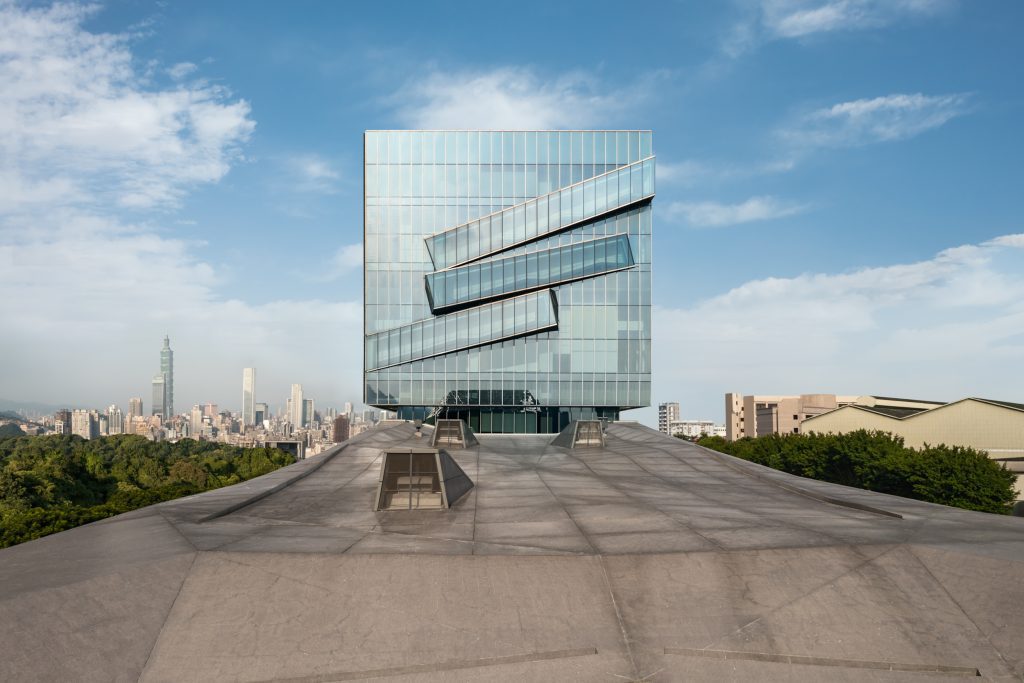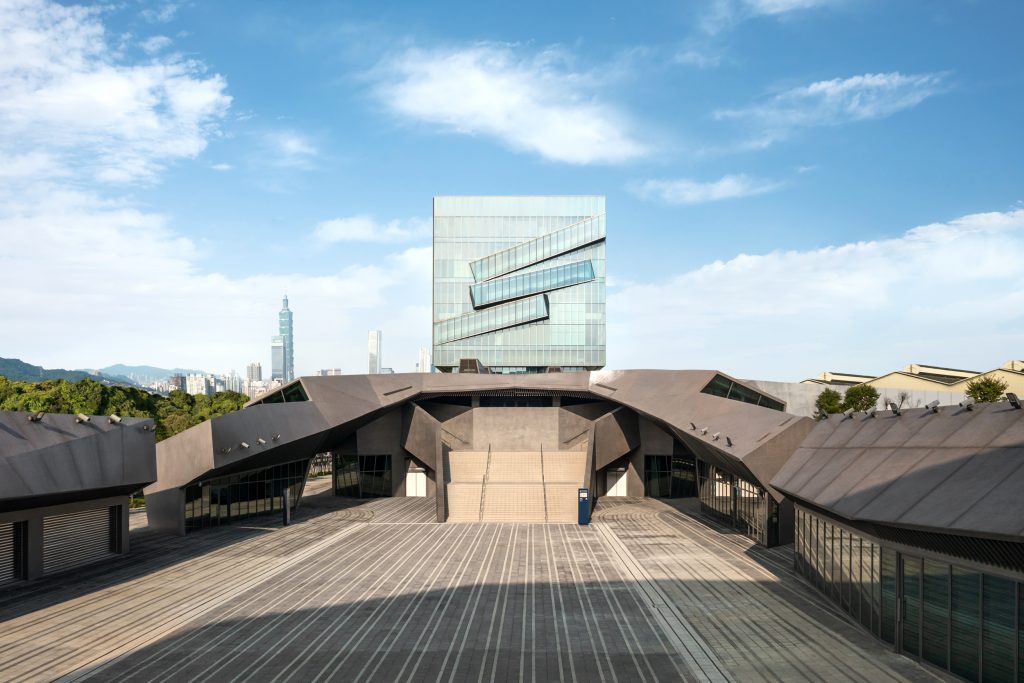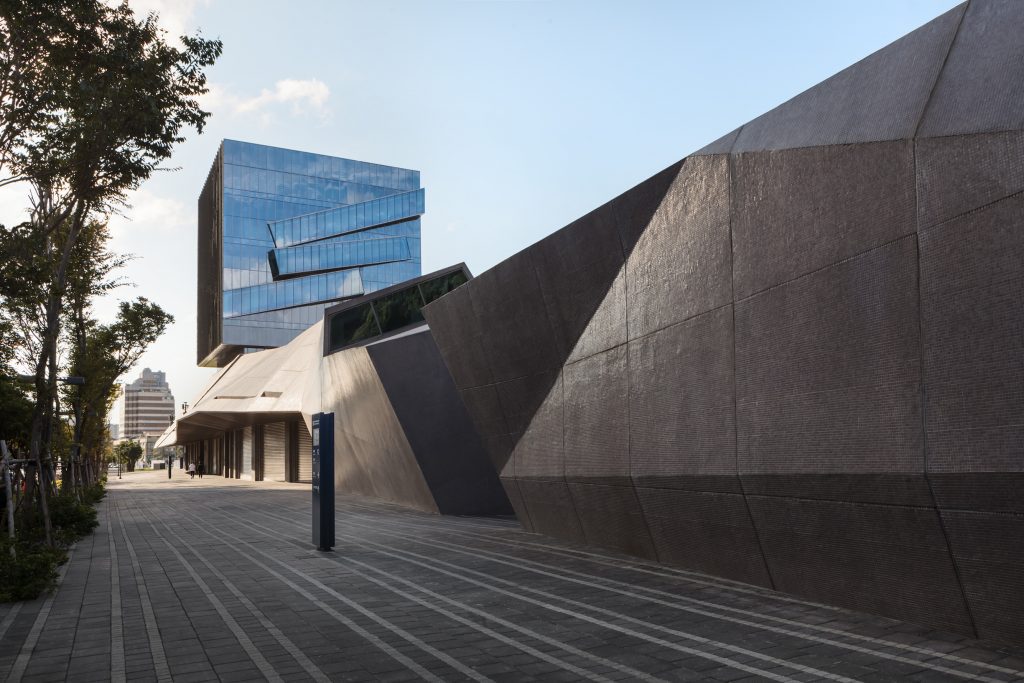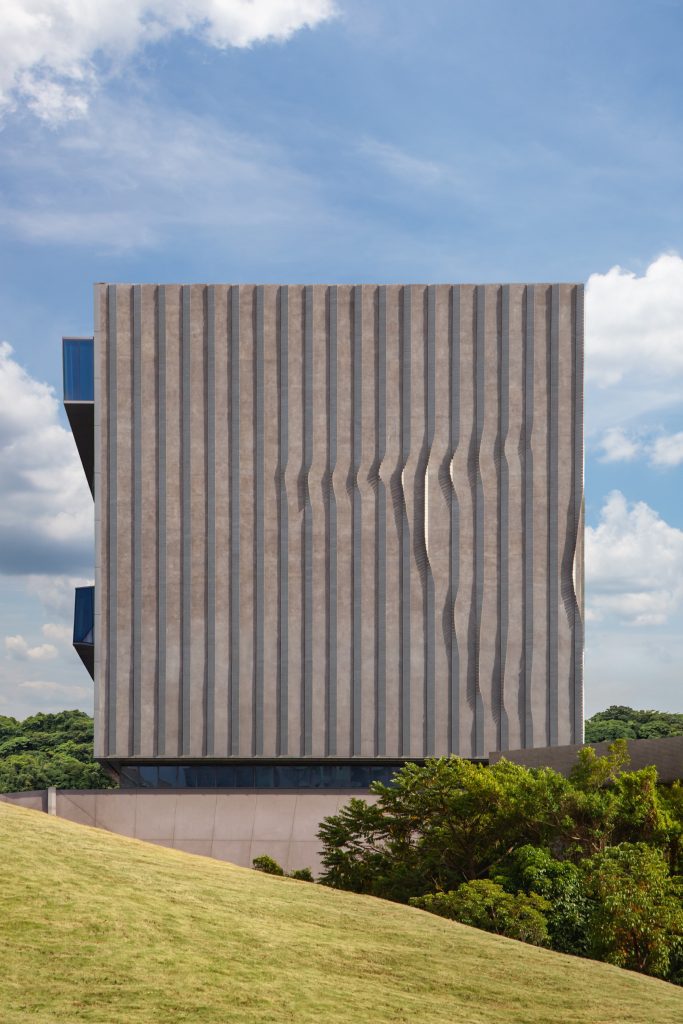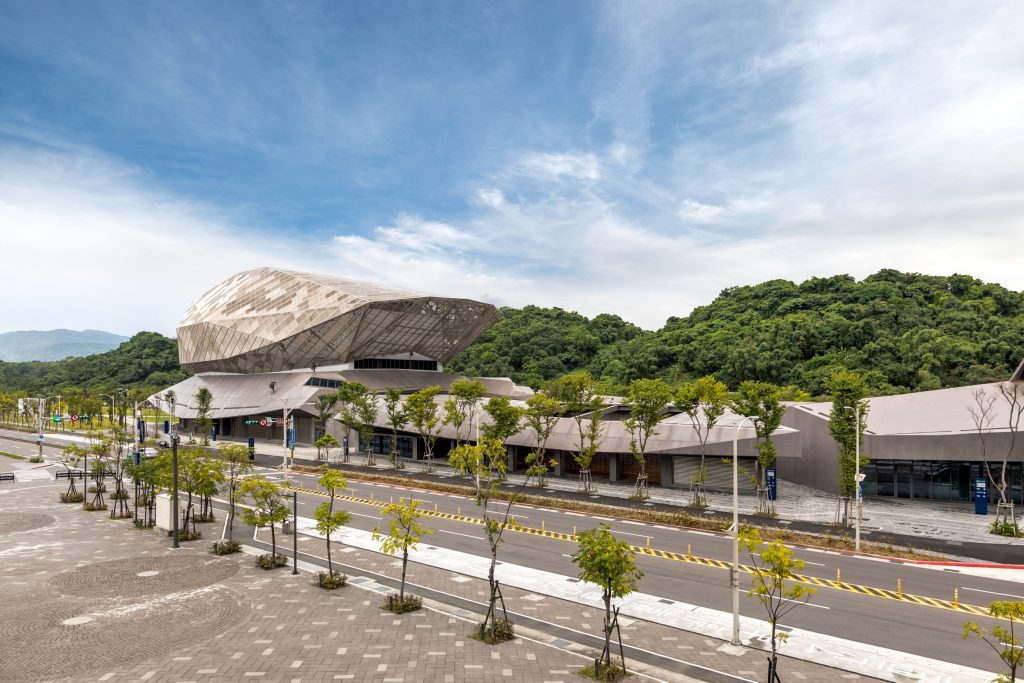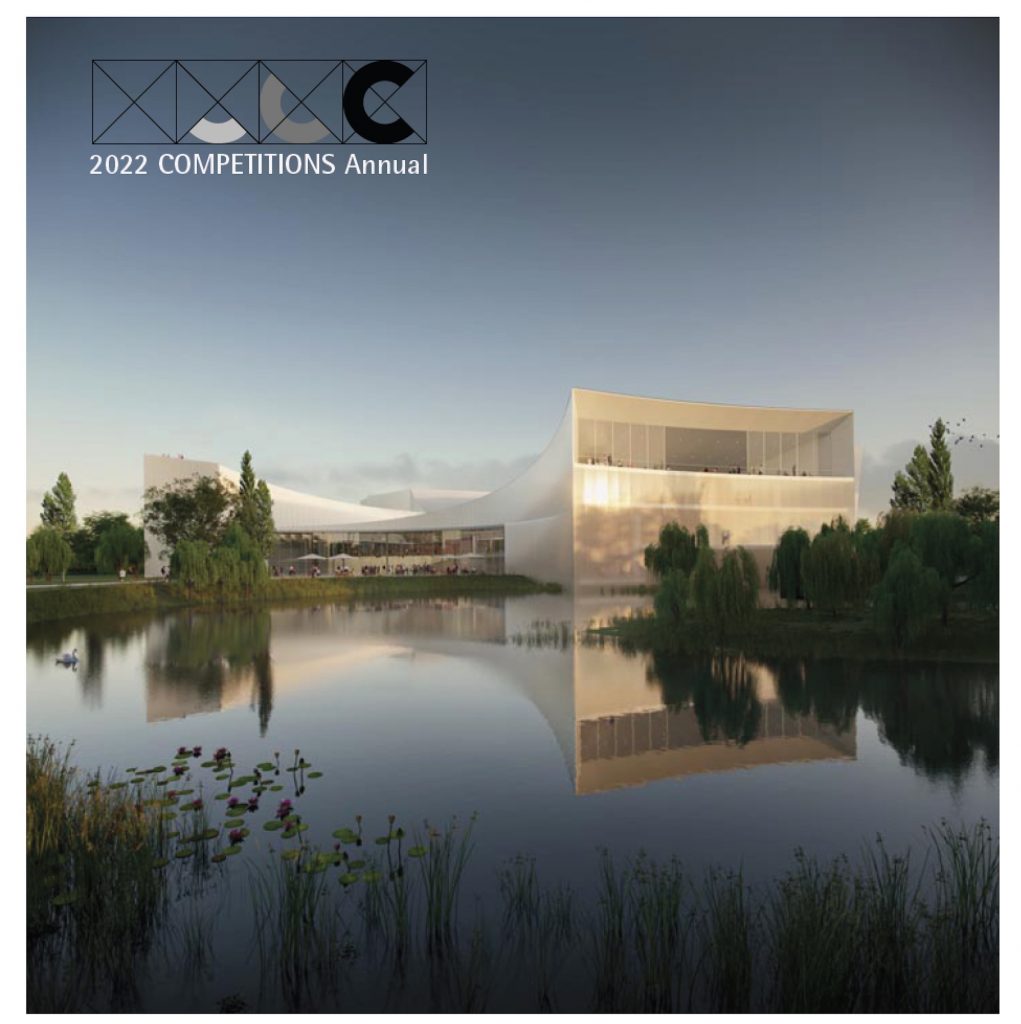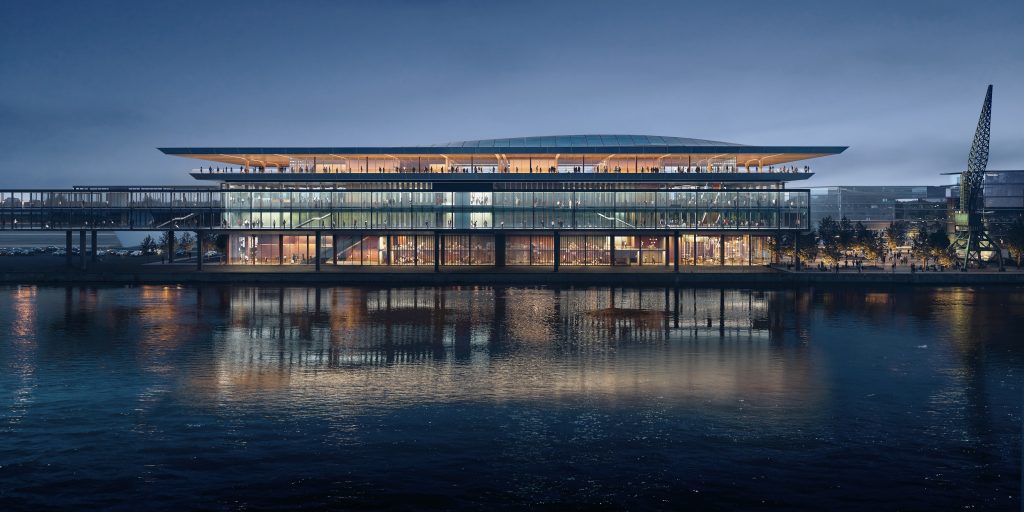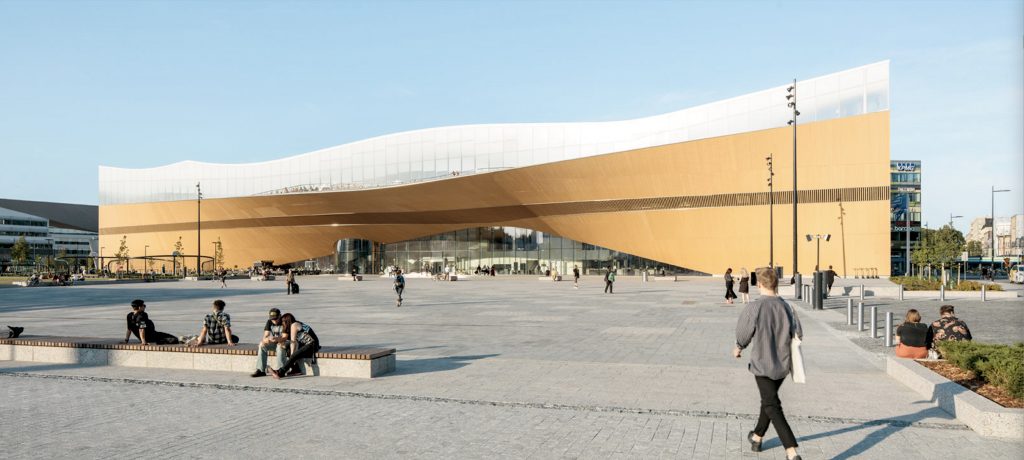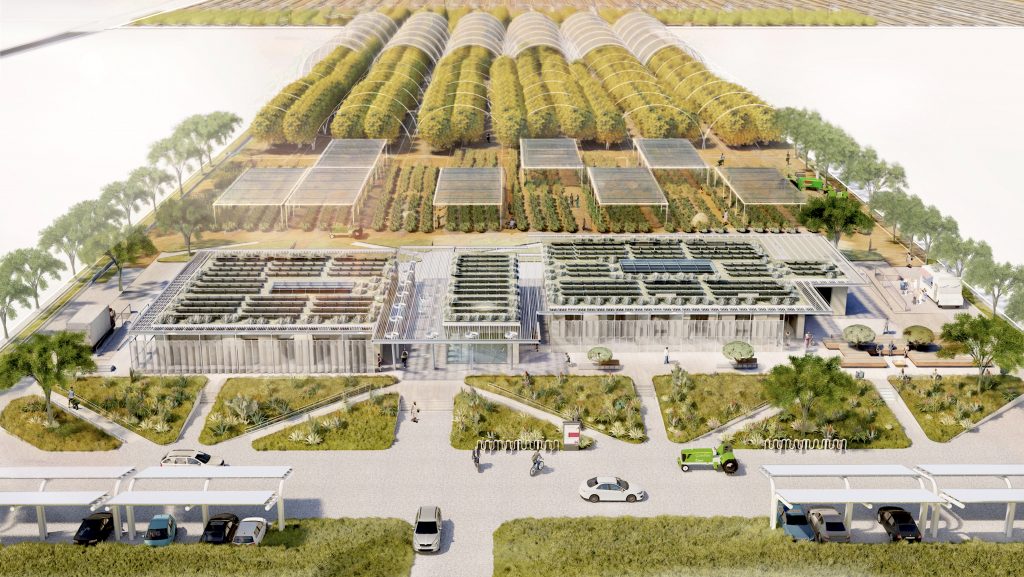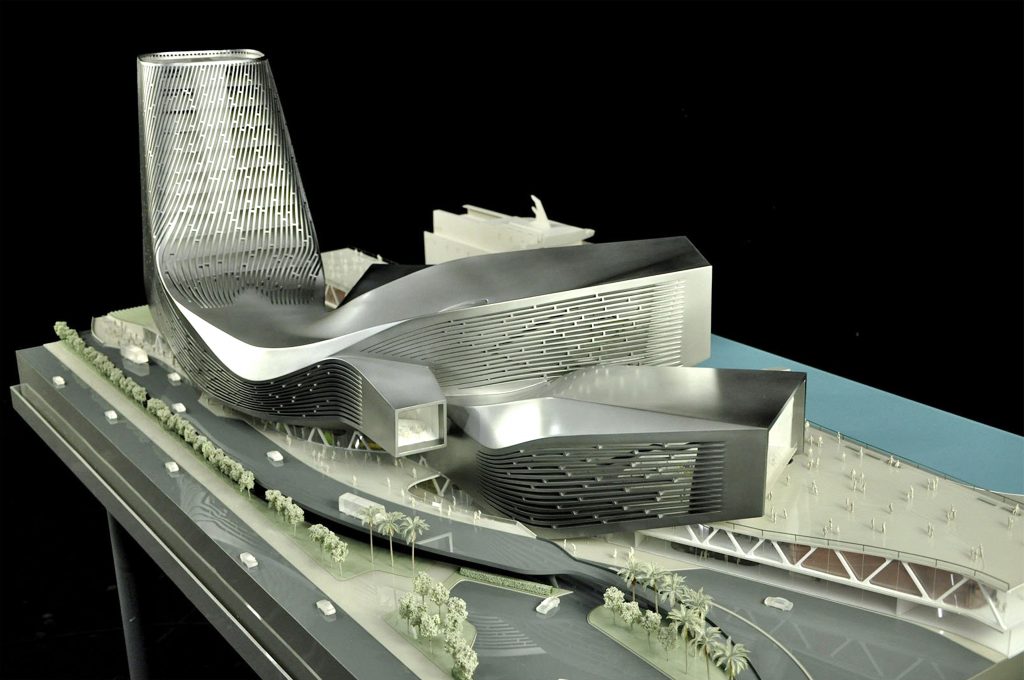From RUR’s Competition Winning Design to Final Realization
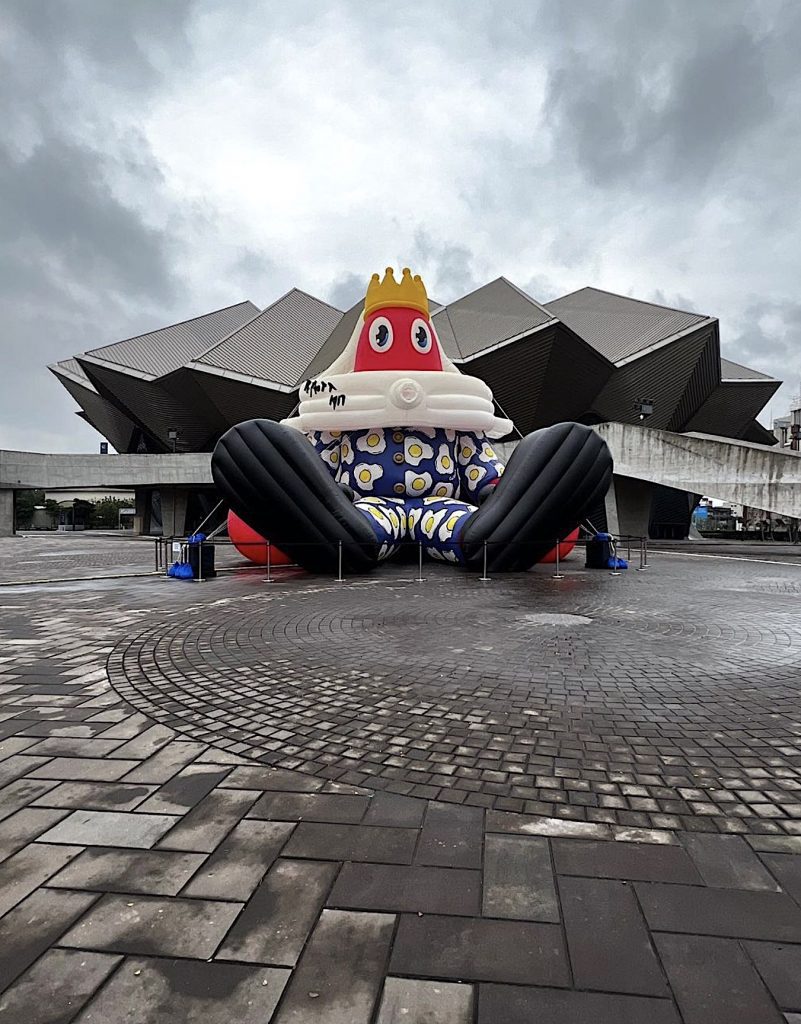
RUR Taipei Pop Music Center performance hall view with artwork ©Philip Colbert
Whether large or small, design competition or straight commission, projects from design phase to realization can stretch over extended periods of time. It was no different with Taipei’s Pop Music Center, which took over ten years from idea to final realization before the project could serve as a creative art complex.
The Competition Entry
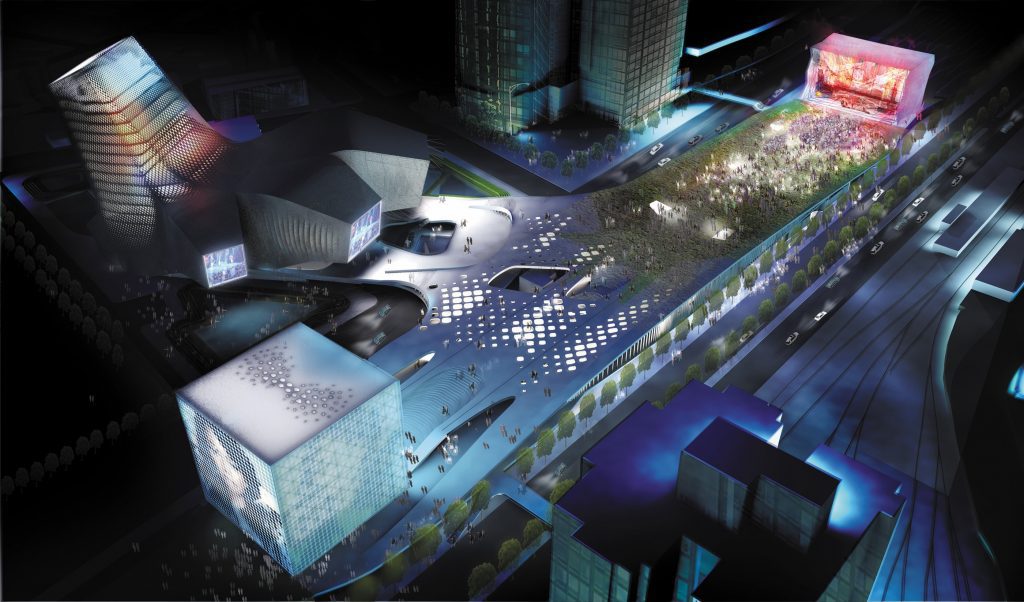
Aerial view of 2009 competition entry ©RUR Reiser+Umemoto
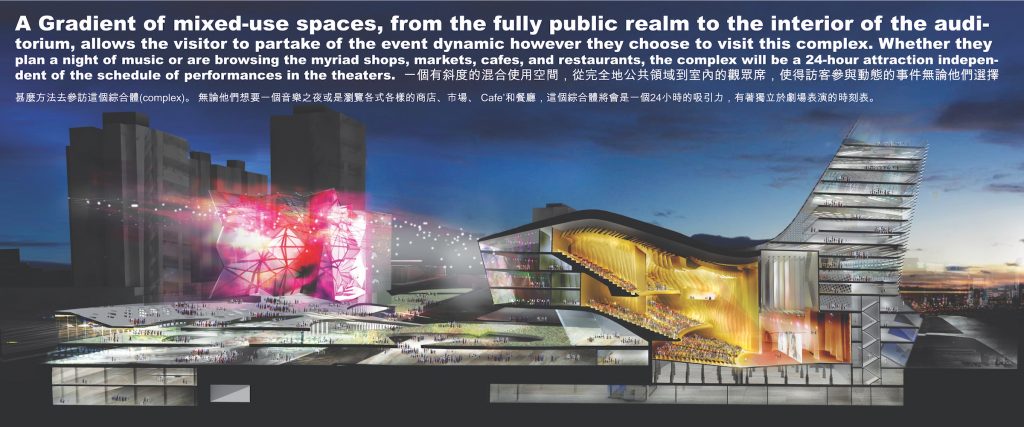
Section of 2009 competition entry showing performance venue ©RUR Reiser+Umemoto
The product of a design competition won by RUR Reiser + Umemoto with local firm Fei and Cheng over a number of high profile firms—Morphosis, Toyo Ito, Studio Gang, etc.—the team’s original concept underwent significant changes during a development phase. The most notable among these was the creation of a stand-alone performance hall venue, which previously had been the major part of a structure containing other functions. The other noticeable change from the initial proposal was a revision of the moving stage on the plinth, which was intended to accommodate different size audiences based on the performers, to a stationary structure housing offices and rehearsal/production studios.
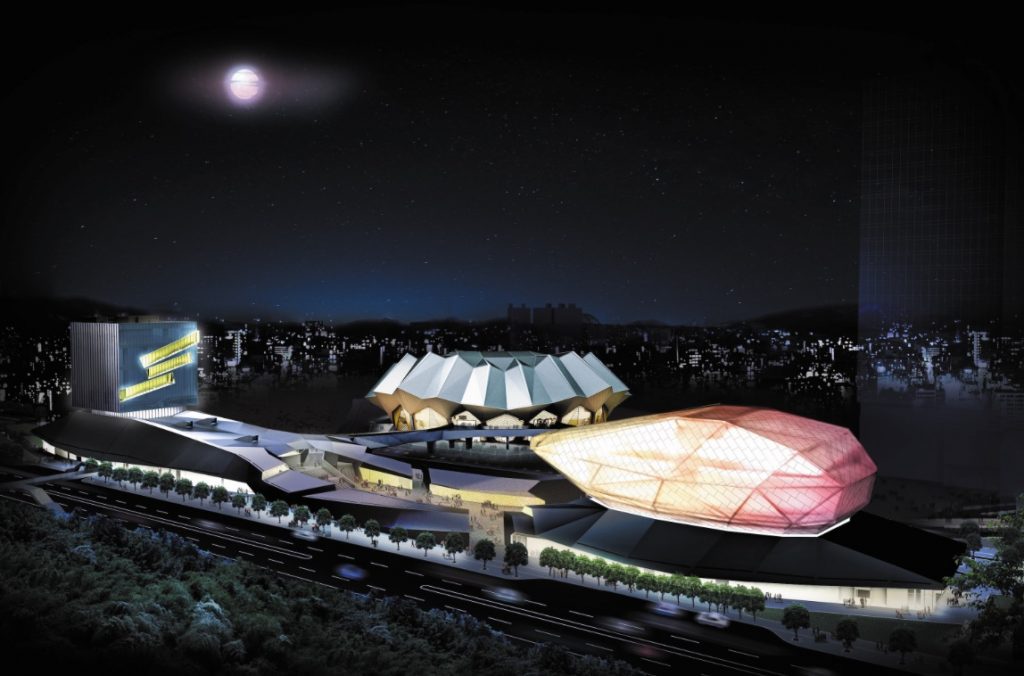
Development design rendering 2017 ©RUR Reiser+Umemoto
Completed Project 2022
Housed in a newly conceived clamshell-styled structure, the concert hall, with an audience capacity of almost 6,000, received the highest priority as the first building in the project to be targeted for construction. It was conveniently connected by an elevated footbridge to the remaining pieces of the project—the museum, offices and recording studios that were perched on the plinth. Recently completed, the entire project can now be experienced by the public. For a project with this complexity, where the lead architect is operating from a distance, especially during the current pandemic, the existence of the local team member, Fei and Cheng, was a fortunate choice. RUR is convinced that the project would never have happened without the important role played by their local partner.
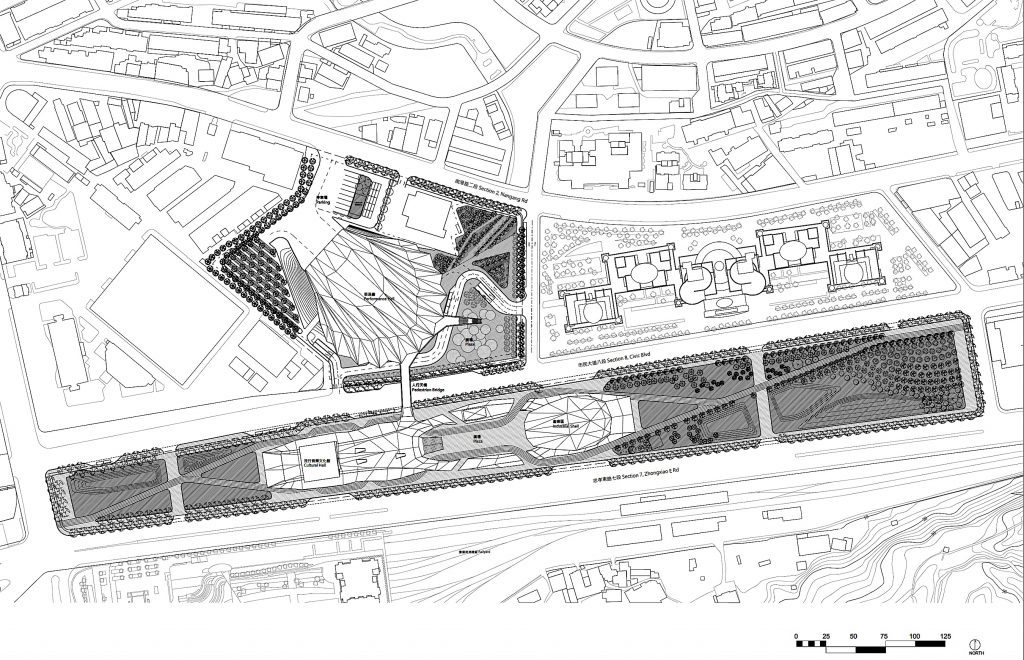
Final site plan RUR Reiser + Umemoto
Already open as an entertainment and production venue for music, one might assume that the size of audiences at events in the performance hall has more than justified the city’s support of this project. Aside from the physical facilities, an artwork by the English artist, Philip Colbert, suggesting the contemporary nature of the concert venue, is there to greet visitors on the plaza in front of the main performance hall. So public art will also have its place in the visitor’s experience at the site, no doubt pointing to a broader vision of the Center’s mission—not stuck in time, but ever adapting to the currents of change in our ever evolving arts scene. In every sense, RUR’s innovative concept, serving as a vessel for entertainment, education and creativity, is well on its way to addressing the high expectations of the Taipei arts community.
The Performance Hall
With its sophisticated lighting program, spatial configuration and contemporary design, the Performance Hall has hit the right note, and as a stand-alone entity, marks it as a logical destination for pop fans and beyond.
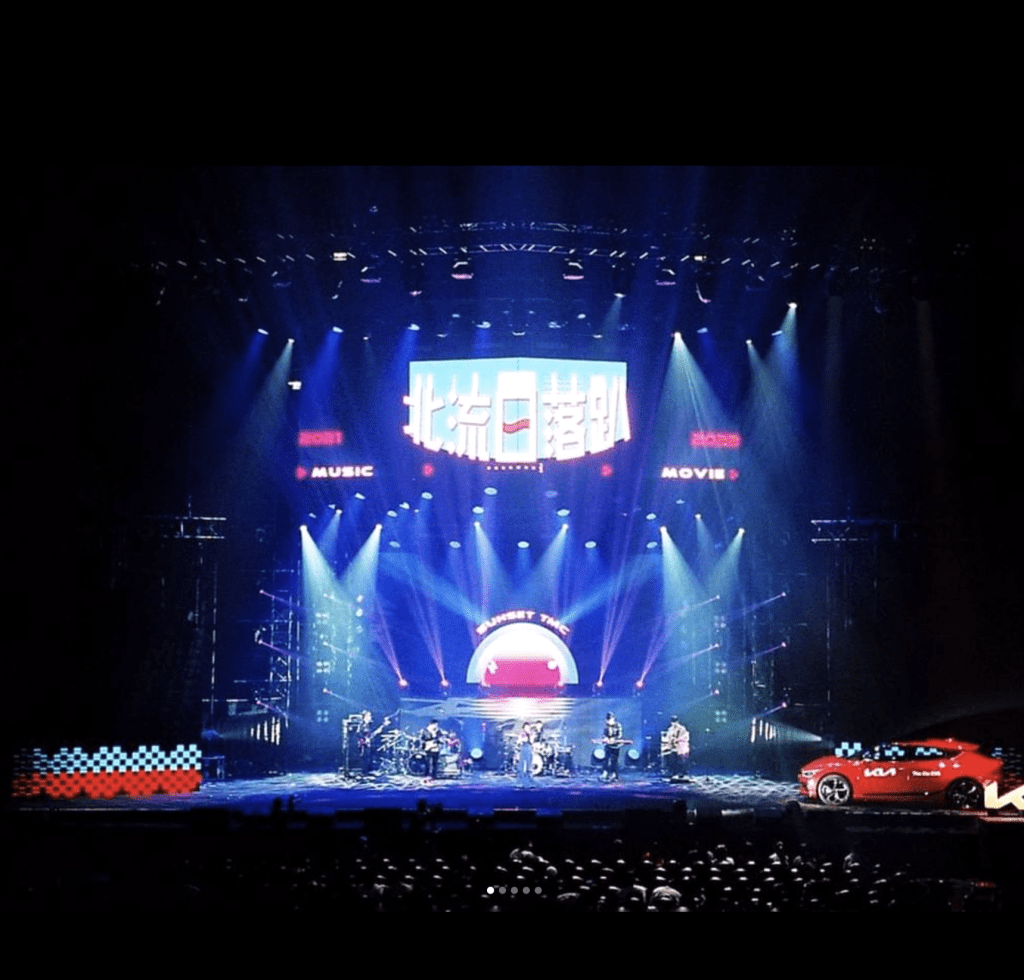
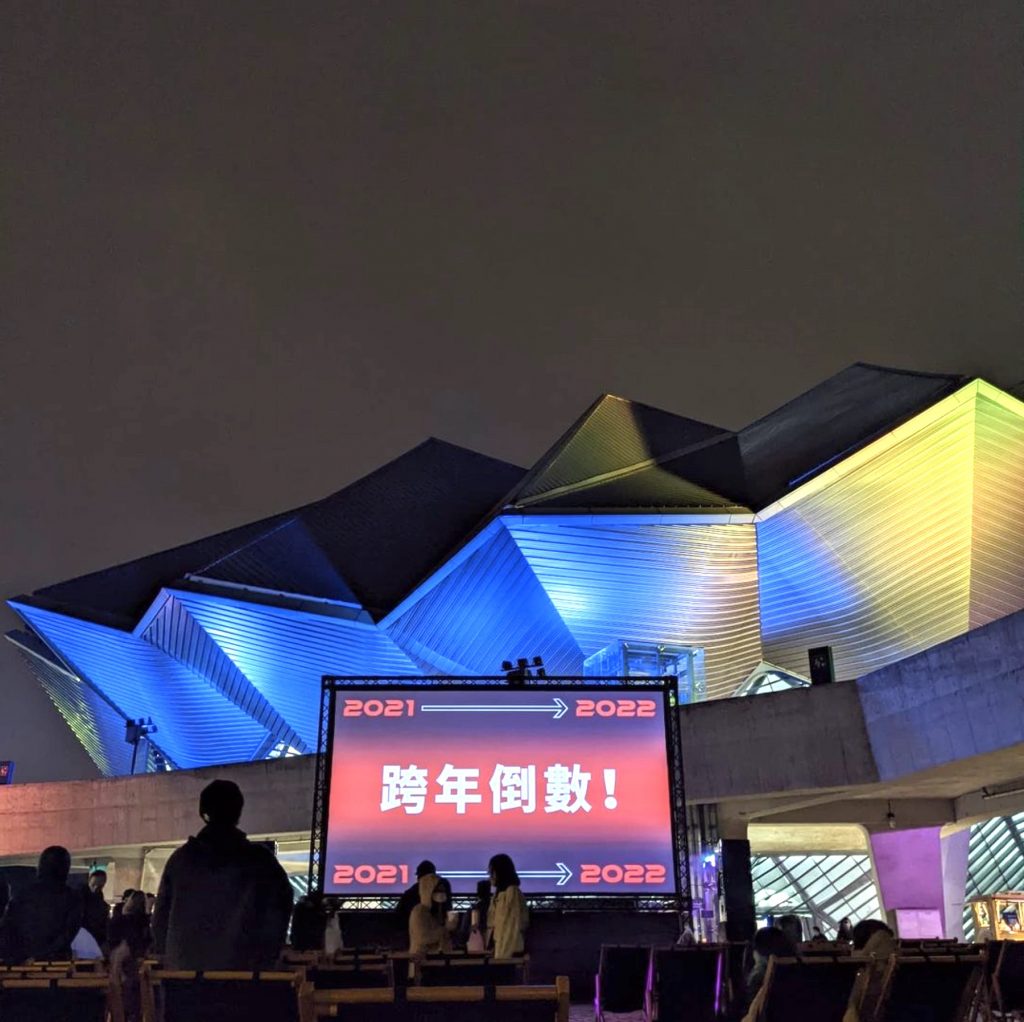
left to right © ©raymond.lu.10
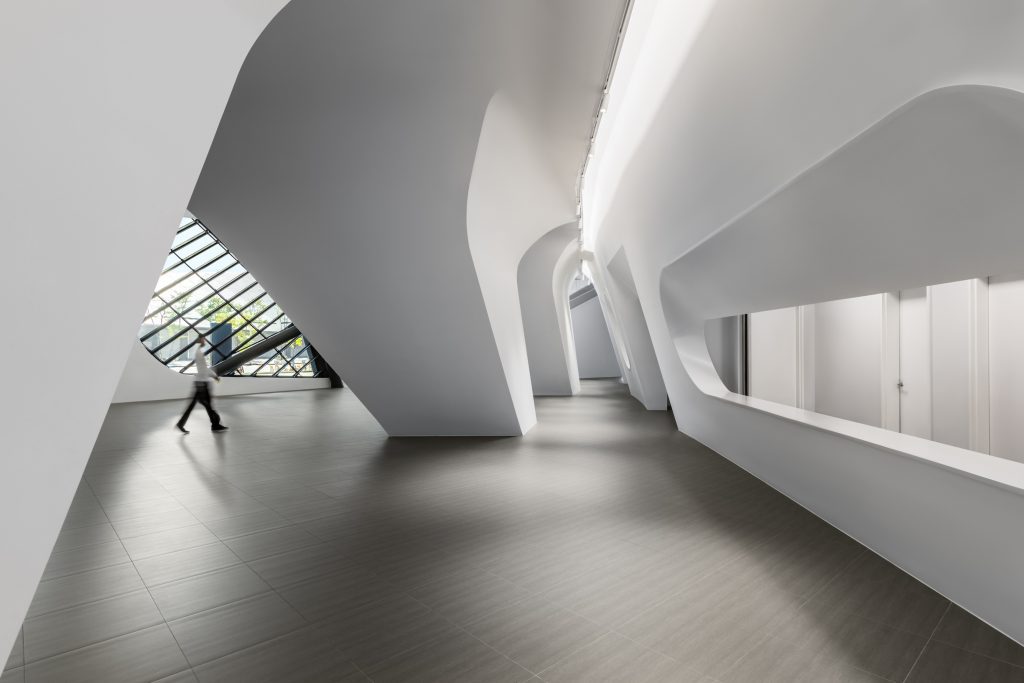
Above: Performance Hall interiors
The Office/Studio and Museum structures
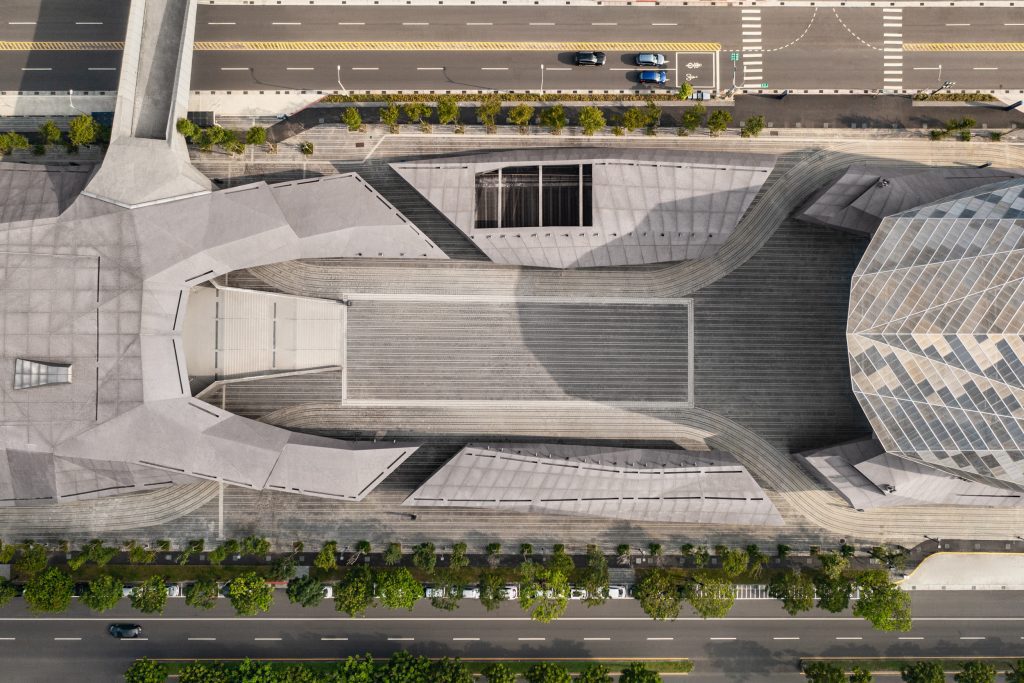
Above: Overhead view of plinth with museum and office/rehearsal studios, with bridge link to Performance Hall upper left
Unless otherwise noted, all images ©RUR Reiser+ Umemoto



























